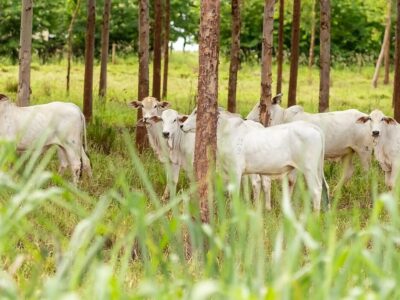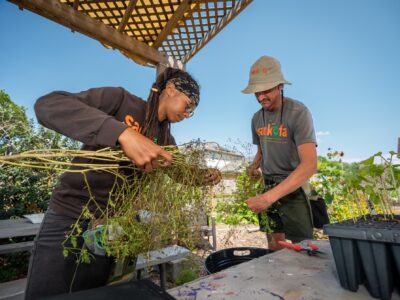The future of growing livestock feed could look drastically different than it does today. Vineyard, Utah-based Grōv Technologies, claims it has “the world’s most advanced vertical farm for animal feed.” The company’s Olympus Tower Farm is a totally automated growing system that promises “robotic automation from Seed-to-Harvest.”
This exciting technology provides several benefits. A single growing tower takes up just 875 square feet yet can grow the equivalent of 35 to 50 acres worth of wheat or barley grass, according to the company.
Additionally, the “superfeed” the system produces is healthier for cows than pasture grass and has been found to improve animal health, according to the company. Grōv Technologies’ autonomous farm towers are capable of producing three tons of fresh feed per day and require just “one human worker for every 10 towers.”
Bloomberg reports that a whopping 41 percent of land in the contiguous U.S. is currently used to grow animal feed. A shift toward using vertical growing systems for cultivating feed for livestock could reduce that number. Bateman’s Dairy Farm, west of Provo, Utah, is the first farm to test Grōv Technologies’ innovative vertical growing system.
This new age farm is home to ten 25-foot towers which grow wheatgrass inside an enclosed tent structure. The pilot system will provide 15 percent of the food for nearly 2,000 cows at Bateman’s Dairy Farm. The technology isn’t meant to replace conventional farming, but rather to provide one part of the mix of food that cattle eat, Fast Company reports.
How does it work? First, robots plant seeds into trays. Next, the trays are loaded into the system, and then conditions are monitored by sensors that determine the amount of water and light needed before harvest, according to Fast Company. Speed is another factor that sets the technology apart.
Grōv Technologies President Steve Lindsley told the publication it takes an average of six and a half days until the wheatgrass is ready for harvest. Comparatively, according to Hunker, wheatgrass grown outside normally takes up to two or three weeks to reach harvest size.
Grōv Technologies’ goal is to sell the growing systems to farmers who can use it to feed their animals.
“The industry can utilize this technology as a counterpunch, really, to some of the lab-based protein efforts or the competitive efforts that are trying to pull people away from beef and/or dairy products,” Lindsley said.
Another major benefit of the vertical system is that, because it is operable indoors, many weather-related challenges can be avoided. This could prove to be even more beneficial as climate change continues to spur increasingly extreme weather events. The company says that 56,691 gallons of water are saved per tower, and its president Steve Lindsley says the company’s technology uses just around five percent of what is used in conventional farming.
“Grōv provides support, but the system is designed to operate on its own, without any additional labor needed from the farmer. The system is also designed to minimize operating costs. The startup’s custom lights, for example, don’t put out heat, avoiding the large air-conditioning bills that are necessary in some other indoor farms,” Fast Company reports.
Grōv Technologies says that the system can also run on renewable energy and that the company itself is positioned to reach net-zero emissions by 2025, reports Fast Company. Grōv Technologies currently employs more than 100 people and was founded in 2015.
“By 2050, the world’s farmers will need to increase their output by 60 percent to feed the growing population,” the company says. “In the midst of this near-impossible challenge, they must also reduce carbon emissions, minimize waste, and combat a rapidly changing climate using less water and less land than ever before. The world’s food security is at risk and innovative technologies and business models will be required to adapt and thrive.”





